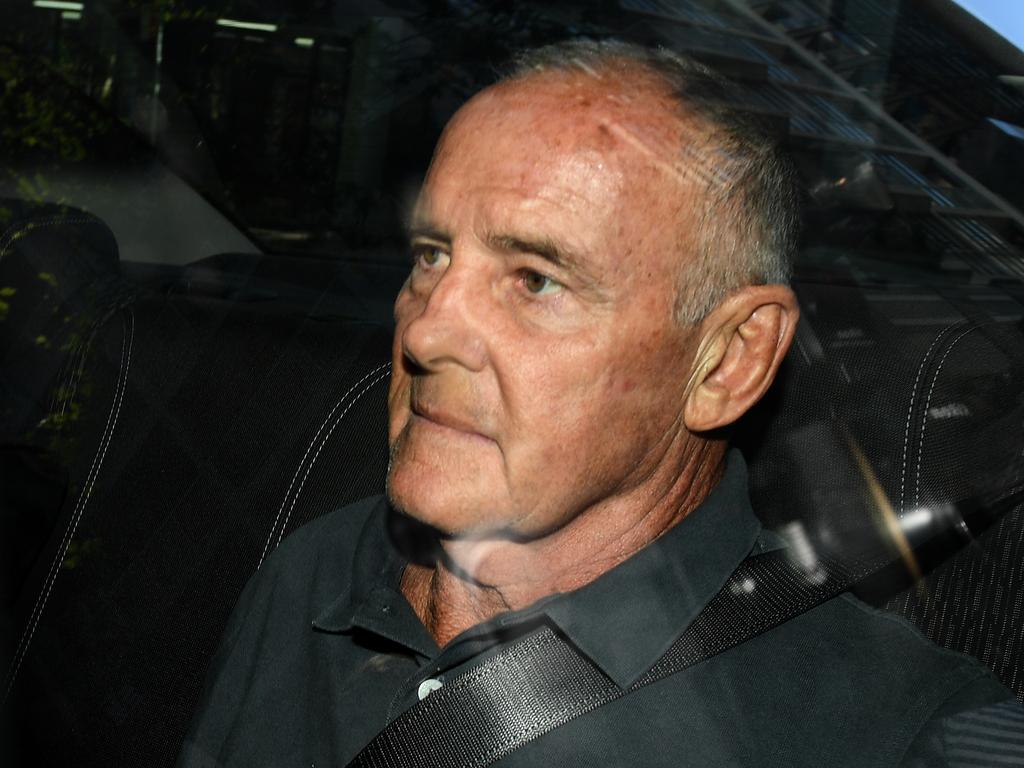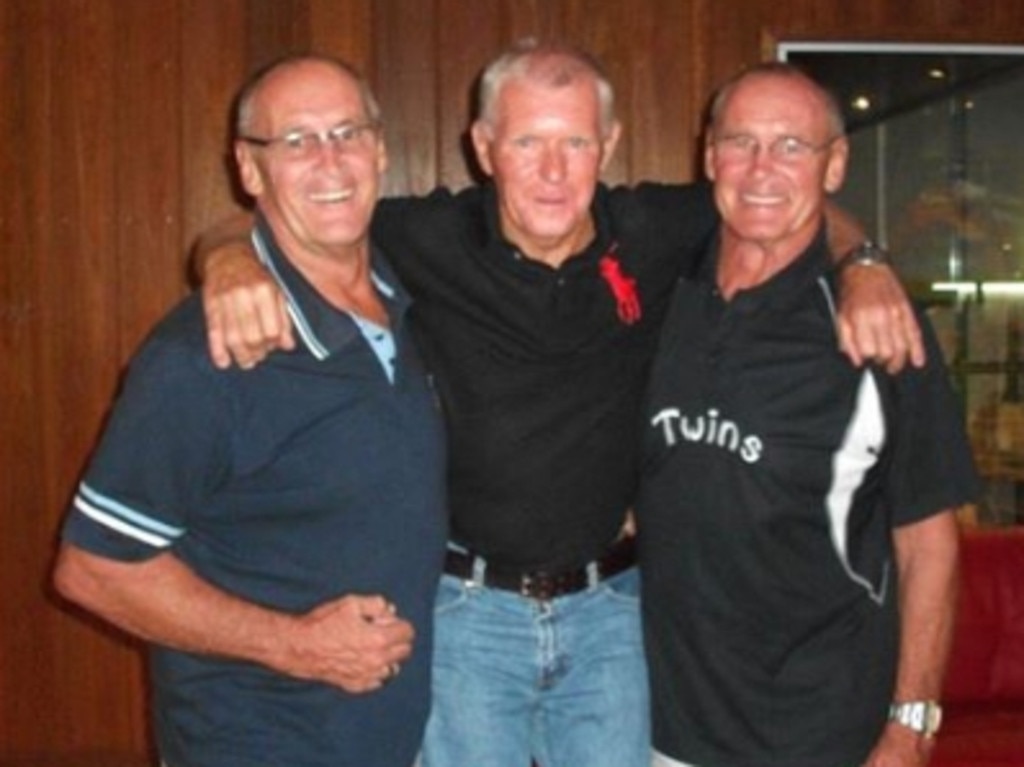Chris Dawson claims ‘good character’ in Lyn Simms murder appeal
Judges hearing Chris Dawson’s appeal against his murder conviction have challenged his character claims and referred to the diamond rings of his missing wife being ‘conveniently’ left behind.
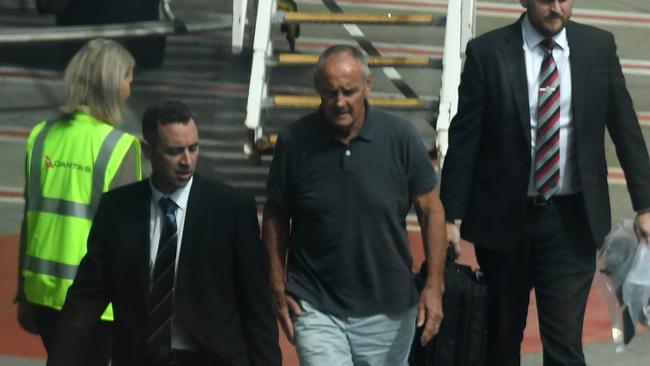
Judges hearing former star footballer Chris Dawson’s appeal against his murder conviction have challenged his claims of being of “good character” and have referred to the diamond rings of his missing wife Lyn being “conveniently” left behind.
Public defender Belinda Rigg SC told the NSW Court of Criminal Appeal on Tuesday that she had set out Dawson’s good character in detail in written submissions, and that it should be taken into account.
Justice Christine Adamson responded that although Dawson did not have any criminal convictions before he was found guilty of murdering Lyn, there was evidence about his behaviour as a married teacher with schoolgirl JC.
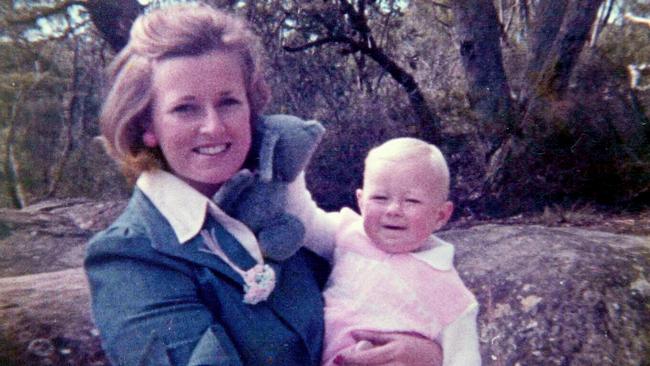
Dawson was found to have killed Lyn so that he could have an unfettered relationship with JC, whom he later married.
“One might think the good character was not entitled to be given any particular weight,” Justice Adamson said.
Ms Rigg said there was evidence Dawson had a “non aggressive and non violent” nature, with some witnesses at the trial unable to accept he would ever have acted in a violent way or that he would have killed his wife.
Judge Julie Ward said: “So it’s only aspects of his character you want us to take into account, not the ones that aren’t so good?”
Ms Rigg said the three appeal court judges, Ward, Adamson and Anthony Payne, could take into account evidence of Dawson’s “sexual relationship with a student”, but should give more weight to other aspects of his conduct.
Dawson was charged with and convicted of his first wife Lyn Simms’s murder following The Australian’s investigative podcast The Teacher’s Pet.
He was sentenced to 24 years’ jail, to serve at least 18 years, and is expected to die in jail unless his conviction is overturned.
Since his murder trial, he has also been convicted of unlawful carnal knowledge of the school student he later married, and was sentenced to three years’ imprisonment for that offence.
Dawson claimed he dropped Lyn off at a Mona Vale bus stop on the morning of January 9, 1982, and that she phoned him later that day to say she needed “time away”.
Justice Ward, the appeal court’s president, said on Dawson’s account Lyn had “conveniently left her jewellery behind, has she?”
“Sorry, your honour?” Ms Rigg replied.
“She’s left her jewellery behind, has she?” Justice Ward said.
“I think that’s the evidence, yes, that there was jewellery left behind,” Ms Rigg said.
“So, he drops her at the station not wearing her wedding ring, not her engagement ring,” Justice Ward said.
Lyn’s two diamond rings were left behind at the home and were later refashioned into a ring JC wore to her wedding to Dawson.
Dawson, 75, watched the proceedings via video-link from Clarence Correctional Centre near Grafton.
He argues among other grounds a miscarriage of justice occurred because trial judge Ian Harrison found beyond reasonable doubt that he did not receive a telephone call from Lyn at the Northbridge Baths on January 9, 1982, and that Lyn was dead by that afternoon.
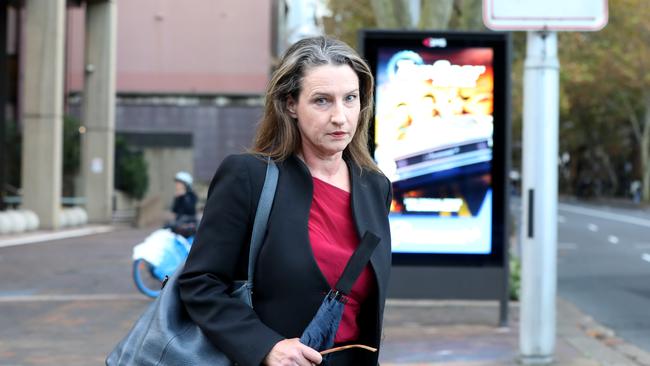
Crown prosecutor Brett Hatfield opened his submissions Tuesday by saying: “There is not a significant possibility that an innocent person has been convicted in this case.”
Mr Hatfield said Lyn either abandoned her family home at Bayview on Sydney’s Northern Beaches, or she was murdered by her husband.
Dawson’s account of Lyn phoning him after she disappeared, when she had no contact with anyone else, was not credible, he said.
It was inherently unlikely Lyn in particular “would have voluntarily abandoned the husband that she idolised and the children she adored”.
There was a “compelling body of evidence” of her devotion to her two daughters, then aged four and two.
“She would not have ceased her relationship with her parents and siblings voluntarily,” he said.
Prior to Lyn going missing, Dawson had proposed marriage to JC, referred to their future together and attended her school formal as her date.
In the face of all this, a stoic Lyn had an “unwavering commitment to her marriage”, was devoted to her “Chrissy” as she referred to her husband, and tried to restore the marriage through counselling.
That was “despite him having been unfaithful and having temporarily left the home” with JC.
“If she wasn’t leaving when those other things occurred, why would she leave when it had just got a little bit better after the counselling,” Mr Hatfield said.
It was a significant understatement to call Dawson’s relationship with JC an affair, he said.
“The detail of it shows it was marked by a degree of desperation and obsession on the part of (Dawson). He was controlling and exerted significant pressure on JC and others and was prepared to take increasing risks to preserve it.”
Before Lyn vanished, Dawson moved JC into his house as a babysitter initially, then into his twin brother Paul’s house a few doors away, came up with a plan to lease a Manly flat and to sell his family home, and then temporarily left the marriage to move to Queensland with JC.
The Queensland trip just before Christmas 1981 failed because JC fell ill and wanted to go home and to leave the relationship.
Dawson was the last person to see Lyn alive, and had the “opportunity and motive” to murder her.
His behaviour was “completely irreconcilable” with any belief she was alive or could return home.
He had collected JC from South West Rocks, 460km north of Sydney, on January 11, 1982, and immediately moved her into the family home, where Lyn’s clothing and jewellery remained.
Police had since found no proof Lyn was alive after vanishing.
Dawson claims Justice Harrison also erred in failing to find that he suffered a significant forensic disadvantage due to the passage of time before he was charged with Lyn’s murder.
He says that with witnesses dead, no phone records or bank statements remaining, and other evidence lost, he wasn’t able to find the evidence Lyn was still alive.
Justice Harrison rejected these arguments at the trial.
Dawson also says Justice Harrison made a mistake when he declared Dawson’s lies demonstrated his consciousness of guilt.
And he argues the verdict is unreasonable, because the Crown failed to adequately prove Lyn Dawson was definitely dead after January 9, 1982.
The whole of the evidence was insufficient for the judge to be satisfied beyond reasonable doubt, Dawson says. The hearing continues Wednesday.


